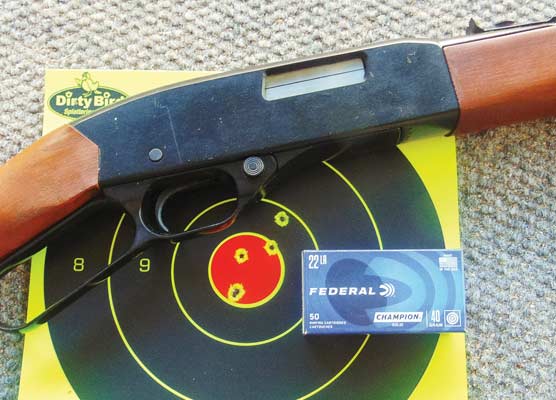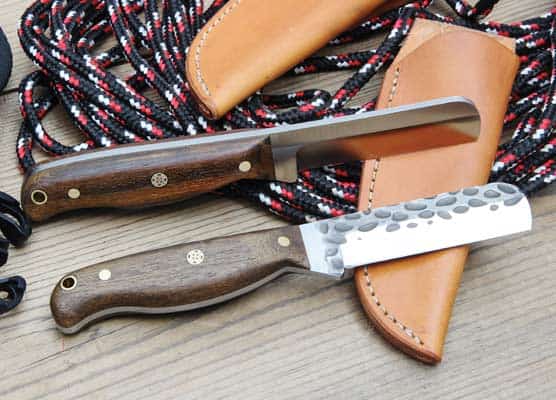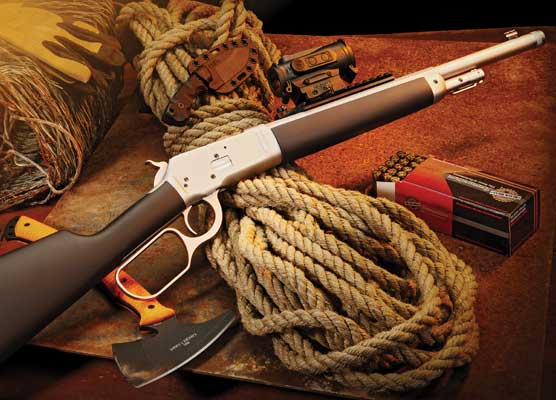Guns | Handguns |
1
By Massad Ayoob
A theory on the gun-related Internet says “good” trigger pull equals “light” trigger pull. This has led to folks going below the recommended “duty” trigger-pull weight (read: “for self-defense as opposed to dedicated target shooting”) and getting in trouble over it in court.
Sometimes it happens because they actually did have an unintended discharge under stress, and sometimes they’re in trouble because the opposing lawyers know it was a justifiable shooting, so they hang their hat on the theory you shot their client by accident. They do this because they know there is no such thing as a “justifiable accident.”
The “negligence” element—the key ingredient in a manslaughter case—is a whole lot easier to sell than the “malice” element essential to sustaining a murder charge. The deep pockets of the insurance company won’t open to the deliberate shooting known as a “willful tort,” but they will open for a negligence-based lawsuit a liability insurance policy was bought for.
Never forget what you and I would call utter BS is—when uttered by an attorney—dignified in the courtroom as “plaintiff’s theory of the case” and has to be treated as if it was just as plausible as the actual truth your side is trying to get across.
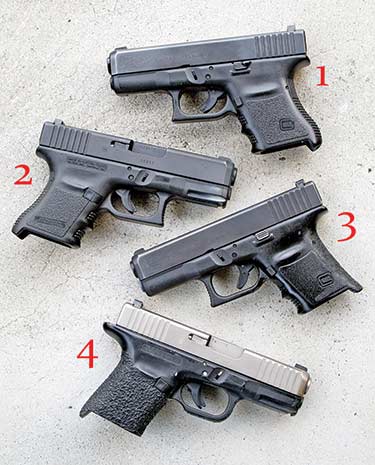
If the original GLOCK 30 (1) has too long a trigger reach, you can try
the 30SF (2), or get a grip trim from Tarnhelm Supply (3) or Robar (4).
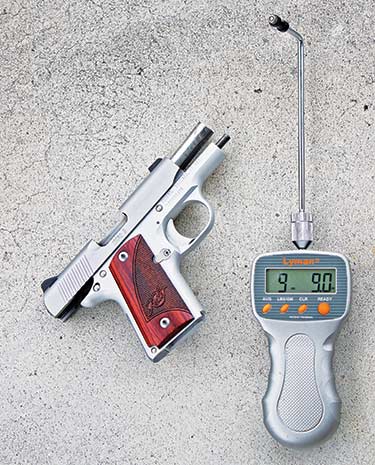
The Kimber Micro 9 trigger felt much lighter to all shooters than
its actual pull weight, measured on this Lyman Digital gauge.
If a handgunner truly believes they’re shooting poorly because their trigger is too heavy, and the trigger pull is in fact within factory spec for duty work (as determined by measurement with something like the excellent Lyman Digital gauge), it might be something as simple as a “trigger reach issue.” This can be squared away by (A) buying a gun with a trigger reach better fitting your hand, (B) modifying the grip or trigger dimensions of the handgun, or (C) merely changing index finger placement on the trigger.
Everyone talks about how “the gun has to fit your hand,” but few understand the measurements involved. The most important element is “trigger reach.” On the shooter, it is measured from the web of the hand in line with the long bones of the forearm, to the chosen part of the index finger that will contact the trigger. On the handgun, it is measured from where the web of the hand will be, to the contact point on the trigger. There are three of those finger contact points most folks choose from: the tip, the pad and the distal joint. The crease on the palmar surface of the distal joint was called “the power crease” by the old master double-action revolver shooters, because it is where a sweet spot of leverage is found.
Take the index finger of your non-dominant hand, turn its fingerprint away from you, and stiffen up the finger to resist being pulled. Now, with the trigger finger of your dominant hand, press it back toward yourself against the resistance. Do it again with the pad, which is generally where the whorl of your fingerprint is centered. And then try it with your trigger finger at the distal joint. You’ll feel a lot more power. The reason is, more leverage. Leverage equals power, and power controls.
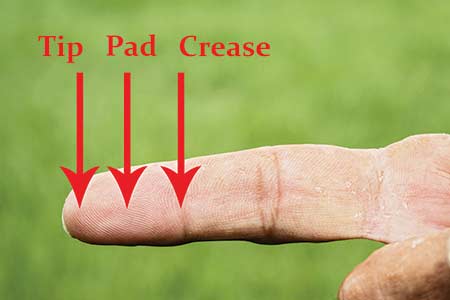
These three trigger finger placement spots don’t all
give shooters the same leverage.

With distal-joint index finger contact on Kimber Micro 9 with its shorttrigger
reach, the pull felt markedly lighter to a variety of experienced handgunners.
The Kimber Micro 9 pistol I tested for the cover of this magazine is a 9mm 1911 shrunk down for minimum size with reliable function, both of which it turned out to deliver. Among our six testers, all state or regional champion shooters, estimates of trigger pull weight were 3 pounds, 4 to 4.5, 5, 5 to 6 (mine), 6.5 and 8 pounds. Interestingly, the outliers on both ends of the scale were the two petite females, 5 feet tall with proportionally-sized hands. The one who estimated 8 pounds shoots competition with an ultra-light-trigger 1911 match gun, and the one who estimated “3” is accustomed to a GLOCK with a standard pull of farther reach.
The Lyman gauge showed the actual pull weight of the test pistol was 9 pounds, 9 ounces.
What made the difference? Leverage for the most part, but also habituation. The Kimber engineers had scaled the Micro 9 down to its cartridge and minimized front-to-back dimensions on the grip frame, which did not include the added reach of the usual 1911 grip safety. Photos from the test showed we were all shooting with the distal joint in contact with the trigger. The greater leverage thus afforded had made the trigger pull feel lighter to us all, and all of us found it perfectly controllable.
From different stocks on your revolver to a grip trim on your GLOCK or just buying a different gun, improving your trigger reach and therefore your leverage on the trigger may be the best way to make your trigger pull feel lighter and more controllable. Don’t let an overdone trigger job turn your defensive handgun into an easy payday for plaintiff’s counsel.
The Robar Companies
21438 N. 7th Ave.
Phoenix, AZ 85027
(623) 581-2648
www.robarguns.com
Tarnhelm Supply
431 High Street
Boscawen, NH 03303
(603) 796-2551
www.tarnhelm.com
Purchase a PDF download of the February 2017 issue now!
